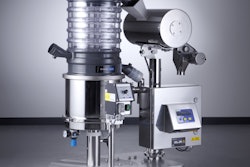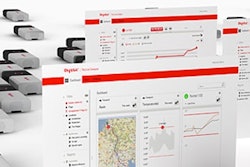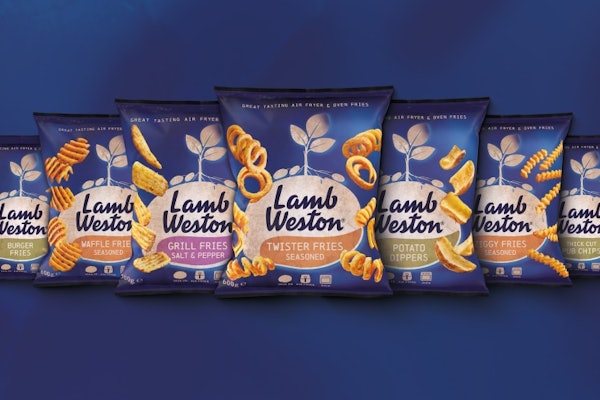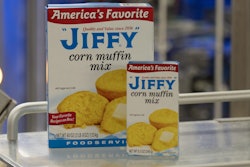1. Document and discuss your requirements. Every machine purchase should start with an in-depth user-specification requirement so that no gray areas can slow or stall the equipment-building process. CPGs sometimes neglect to spend time conferring with suppliers on certain critical functionality aspects, and sometimes such aspects don’t necessarily make it into the specs. Not only is it a good idea to document all of the details, but it’s also crucial to follow up with frequent teleconferences and checks. Some experts believe it’s important to project-manage the supplier and machine buildout, going so far as to get dates and the names of the people on the supplier’s staff who are responsible for hitting those dates.
2. Get operators and technicians involved early on. Cross-functional teams are often composed of employees who are too far removed from the production floor. While the executives will, and should, eventually make the call on a specific machine, the input from the operators, technicians, and mechanics (as well as the container, film, or material suppliers) can prevent missteps resulting in having to refabricate parts halfway through a project. One technique to involve line-level personnel is to hang the blueprints up in the break room for weeks before you actually purchase equipment for a brand new line. The operators can take ownership, be involved, and make notes right on the blueprints—and their specific knowledge of the floor space can be extremely insightful, and not readily apparent to someone who doesn’t spend eight hours a day there.
3. Flexibility of equipment for other applications. Don’t assume you’re developing requirements just for one particular package. Marketing will most likely come knocking a year later with a request to go to a different package size. All of your assumptions in the beginning are no longer valid, and suddenly, your equipment has limited capabilities. You’ll be at fault because you didn’t think about what’s coming next. People put in high-speed lines that are not flexible enough to change: Suppose a consumer unit changes from a 12-pack to a six-pack; somehow you need to get more throughput to makes sixes or fours in the same machine, so you need to use more foresight when specifying equipment.
4. Don’t just replicate what you’ve done before. Doing so may be easier, more comfortable, and less risky, but you won’t be exposing yourself to new technologies and new vendors that may give your package and operation significant cost and time-to-shelf advantages. But, especially if it’s a new piece of machinery, something you never had before, make sure maintenance has all the documentation they need.
5. Don’t fall in love with technology. The machinery you specify ultimately depends on what the product is: Leave your engineer’s hat behind and think like a businessperson. If you specify machinery purely as an engineer, you may be prone to fall in love with a cool technology. But if you think like a businessperson, you’ll find the right tool for the problem. And that’s not necessarily the cheapest machine, but the one that works best for your product. The idea that one piece of machinery is “good enough” because it comes with a lower price tag, or an extremely lower price tag, can really create problems. By trying to save money up front, you end up spending more due to machine downtime, poor support and parts availability, poor accuracies, material waste (product and packaging materials), and so on. Buy the equipment that is right for your product.
6. Determine speed requirements. This really breaks down into multiple components — throughput (nominal, jog, surge) as well as the conveyor speed. Devise two speed requirements: the speed required to produce enough product for the initial launch, as well as the speed required for ongoing production. The overall strategy in approaching this is the balance between short and long term. Try to build in excess capacity (15% is a rule of thumb) for future growth.
Specifying speed requirements for machines can be dicey and is subject to many conflicting opinions. If the first machine should run X, and the next runs 15% more, the next runs 15% more, by the time you’re at the end of the line, that machine is really running more than twice as fast as it needs to. And vendors tend to overstate what the machine can do. If a machine is supposed to run 30 cases a minute, it may actually run 26 really well. So the machine becomes a bottleneck at 30. If you need 30, consider designing it for 35. Running a machine slightly less than what it’s designed for usually yields consistent and reliable operation.
7. Put cost in proper perspective. When initially canvassing vendors, don’t eliminate a machine based on cost. One manufacturer’s price may include more options relative to the other manufacturer's. Also, don’t automatically choose the lowest-cost machine, because you may pay an additional price later on in reliability. Initial cost pales into insignificance when you consider all these other questions: How willing and able are they to customize the machine to your needs? Every plant is different, can they adjust to that? Do you have dirty air, flour everywhere; can they adjust to your system, your environment? How willing are they to do that? In short, many experts feel that buying machines on price is a bad idea; it’s an important criterion, but it is not even in the top five. You may end up spending more money in the long run modifying an inexpensive machine or getting it to work for your application.
8. Conduct ongoing risk assessments. An underutilized best practice is to revise your risk assessment throughout the project, perhaps on a monthly basis. The act of continually questioning where things might go wrong may not avert every problem. But having thought through potential pitfalls and having contingency plans in place better prepares you for when problems do crop up.
9. Don’t skimp on training. Consider sending production people to the vendor’s factory for in-depth equipment and safety training, during or even separate from the Factory Acceptance Test. Not only does it pay off in the end, but it can also provide the equipment manufacturer with more feedback to design better equipment and operator interfaces. It’s also critical to schedule follow-up training, either to reinforce certain things after the equipment has been running for a time or to address issues that have cropped up. Be sure to specify both types of training as part of your requirements. It’s key to have trainers with real-world, in-plant experience. The best training curriculum includes a combination of both classroom and on-floor tutorials.
10. Plan for spare parts. Make sure that your specifications include the identification of common wear parts and that your vendor guarantees their ability to stock them in-house.
11. Pay attention to service contracts. Also be sure to establish good preventive maintenance practices and schedules to minimize downtime.
12. Don’t force the vendor into a corner. Do not make the vendor promise something they can’t deliver. Some vendors are tempted, even with the best of intentions, to agree to conditions that both parties know aren’t realistic. It only sets up both parties for failure down the road.
13. Consider outsourcing versus in-house. You don’t have to install a production line for every new product, particularly if the longevity of that product is far from clear. Ask whether someone else—a contract packager—can do this project better, or cheaper, than you, saving you the capital investment. Other considerations are whether the launch window is extremely tight, or whether this project makes the best use of existing plant space that might be better used for another project.
Liked this article? Download the End of Line Playbook here. Download the Primary Playbook here.

























